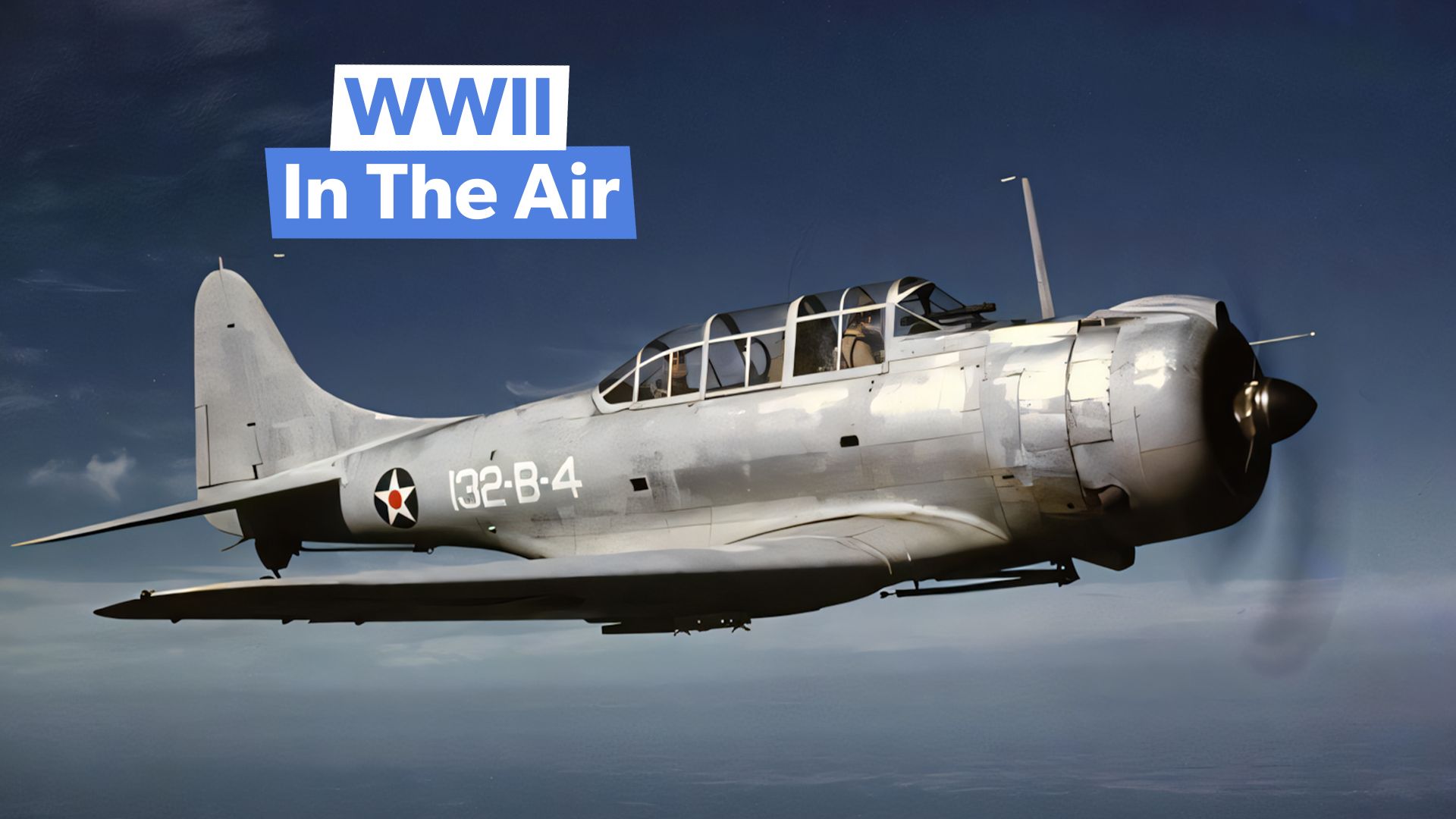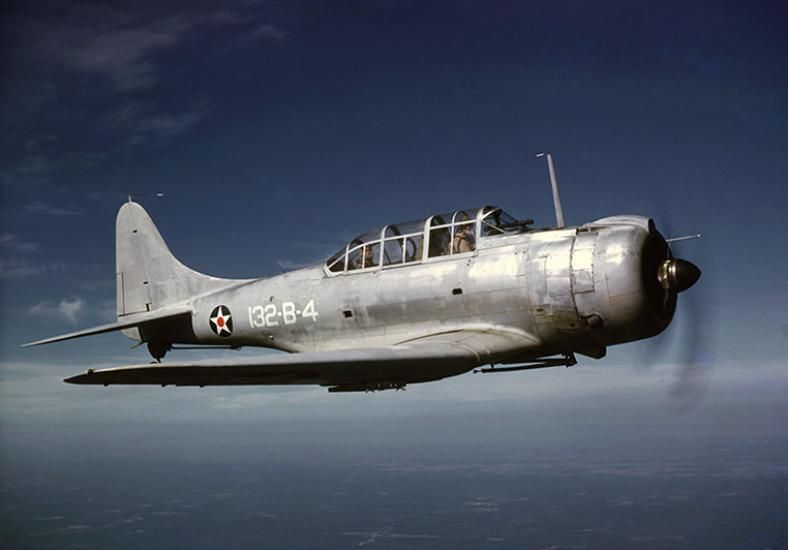The Smithsonian’s National Air and Space Museum — both the main branch in America’s capital city of Washington, DC, and the Steven F. Udvar-Hazy Center in Chantilly, Virginia (a short distance from Washington Dulles International Airport — is an absolute must-see for aviation history buffs. I can personally vouch for both branches, having been to the former once:
…and the latter twice:
As impressive as the NASM already is, it’s about to become even better, thanks to their upcoming WWII In The Air Gallery. Simple Flying now examines what to expect from this soon-to-be display once it’s up and running.
Background
As noted by Moreno Aguiari in a June 2021 article for Vintage Aviation News, the main branch’s original WWII Gallery, which first opened back in 1976 (America’s bicentennial year, when the majority of WWII veterans, AKA “The Greatest Generation,” were still alive to tell the tale), closed in 2019, and it was rather limited in scope and detail, relying on both the artifacts and familiarity of most viewers to the history of WWII, to deliver its impact:
“However, with our proximity to WWII and members of the Greatest Generation fast fading away, NASM felt they needed a new approach to telling the story. As such, the new Jay I. Kislak WWII in the Air Gallery, set to open in 2025, will become a far more dynamic environment for conveying the complex and nuanced history of the air war to generations of Americans who are now far-removed from the living memory of the conflict.”
The planes that the exhibit did display were:
What to expect
Fast-forward to last month, and Mr. Aguiari’s Vintage Aviation News colleague, Adam Estes, indicates that the opening date for the WWII In The Air Gallery will be pushed back an additional year, i.e., to 2026.
Regardless of the actual opening date, the new gallery will definitely be an improvement over the old one in terms of size (to the tune of 6,000 sq ft [557.41 sq m]), scope, and variety. Taking information straight from the proverbial horse’s mouth, namely NASM’s aeronautical department curator Roger Connor, writing for Air & Space Quarterly:
“[T]he story of how aviation came to define the conflict is hazy for many present-day visitors. For that reason, the new gallery sets out to frame the war in an accessible way, with aviation in the foreground.”
(No pun intended on Mr. Connor’s part with “hazy” vis-a-vis the Udvar-Hazy Center, I presume?)
“The new gallery seeks to better frame the story of World War II around the idea that aviation was central to victory, and the exhibition will highlight key areas of wartime aeronautical innovation that changed the nature and experience of warfare. Four of these case studies feature the traditional focus areas of carriers, fighters, bombers, and battlefield support aviation. Other topics include the triumph of wartime industry; the Battle of Britain’s pivotal moment when, for the first time, the fate of a nation depended on the outcome of an air campaign; and the late war’s reliance on missiles and atomic weapons to gain advantage.”
Moreover, instead of strictly focusing on the technical and tactical aspects of the WWII air war, the Gallery will examine the human element, i.e., a focus on the people behind the planes, including:
- US Marine ace and Medal of Honor recipient Maj. Joseph Jacob “Joe” Foss (April 17, 1915 – January 1, 2003; by some accounts, the highest scoring USMC ace of all time, though other accounts confer that recognition upon Col. Gregory “Pappy” Boyington)
- Tuskegee Airman Brig. General Charles Edward McGee (December 7, 1919 − January 16, 2022)
- The Flying Tigers’ (officially the American Volunteer Group) commanding officer, Ma. Gen. Claire Lee Chennault (September 6, 1893 – July 27, 1958)
As for the warbirds themselves, besides the carryovers from the now-closed gallery, the new Gallery will include warplanes moved from other galleries, such as:
- The Eastern Division Gallery’s Grumman FM-1 (F4F) Wildcat
- The Saa-Air Gallery’s Douglas SBD-6 Dauntless (th final variant of this game-changing dive bomber)
- The Space Gallery’s V-1 “buzz bomb” (one of Adolf Hitler’s terror weapons along with the V-2 rocket)
And some entirely new additions for good measure:
- The Soviet Ilyushin Il-2M (unofficially nicknamed the “Sturmovik;” one of only a handful of survivors of the war’s most-produced combat aircraft)
- The Japanese Kugisho MXY7 Ohka 22 kamikaze plane (the only known surviving example of the jet-powered [as opposed to rocket-powered] variant)
- A Douglas C-47 nose section
Mr. Connor adds:
“The old exhibition’s signature backdrop, artist Keith Ferris’ Fortresses Under Fire, depicting the 303rd Bomb Group, also makes a return after extensive conservation.”
In the meantime…
…while y’all are awaiting the much-anticipated opening of the WWII In The Air Gallery (as I certainly am), the Udvar-Hazy branch has plenty of WWII warbirds gawk at, including some proverbial rare birds and oddities, such as:
- The Dornier Do 335 Pfeil (“Arrow”), Nazi Germany’s fastest piston-engined aircraft of WWII
- The Arado Ar 234 Blitz (“Lightning”), the Luftwaffe’s WWII jet-powered bomber
- The Nakajima Kikka (橘花; “Orange Blossom”), Imperial Japan’s only jet aircraft to fly during WWII


